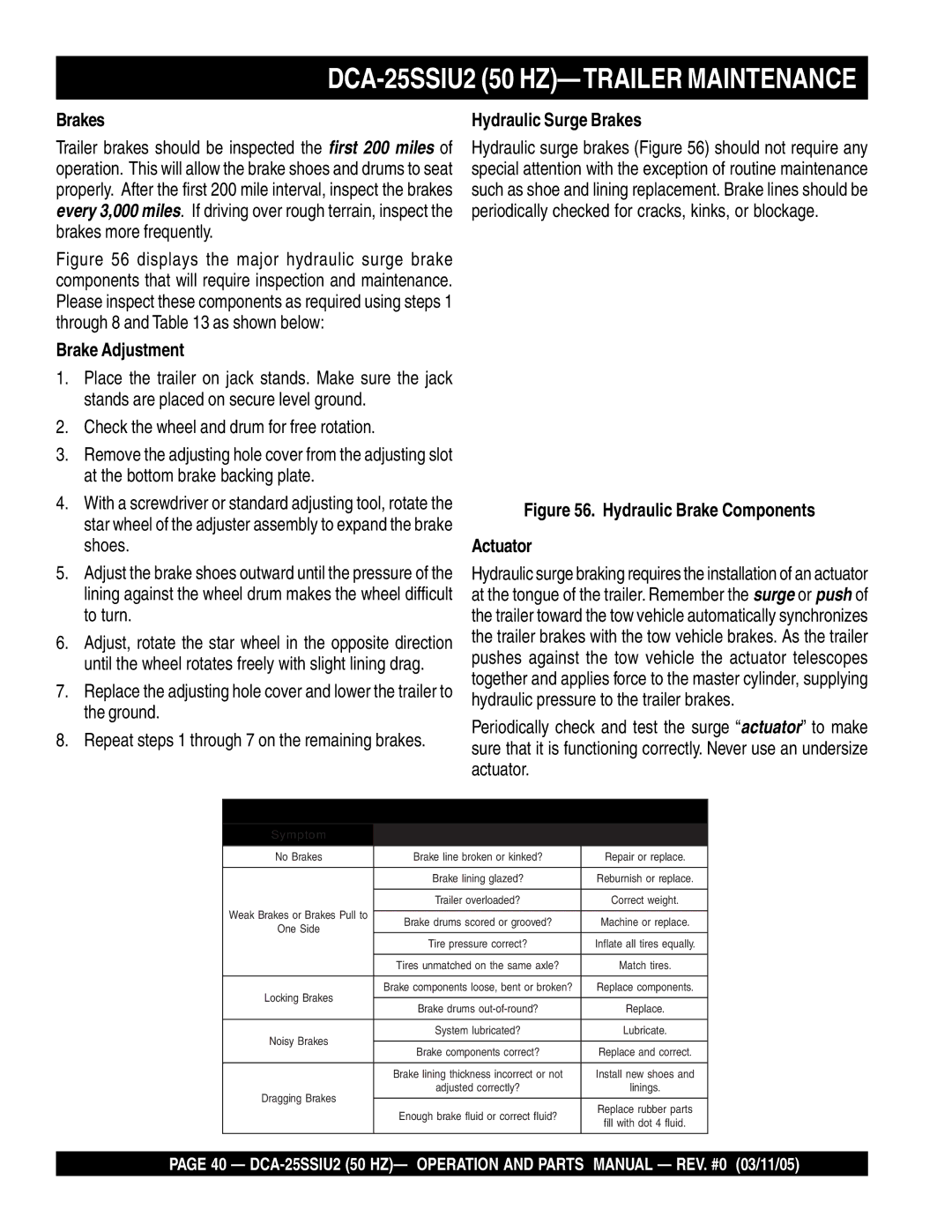DCA-25SSIU2 specifications
The Multiquip DCA-25SSIU2 is a versatile and powerful diesel generator, designed to meet the needs of various industries while providing a reliable source of power. This model is particularly popular in construction, event management, and emergency backup supply applications. With its robust build and advanced features, the DCA-25SSIU2 stands out as a top choice for professionals seeking durability and efficiency.One of the significant features of the DCA-25SSIU2 is its impressive power output. The generator delivers a continuous output of 25 kVA, making it suitable for powering heavy machinery, tools, and equipment. This model is equipped with a turbocharged, liquid-cooled YANMAR engine, known for its performance and fuel efficiency. The engine operates quietly, ensuring minimal noise pollution in sensitive environments.
Built to withstand harsh conditions, the DCA-25SSIU2 is housed in a sturdy steel frame enclosure. The design not only protects the generator from the elements but also reduces noise levels. The enclosure features a weather-resistant finish, making it ideal for both indoor and outdoor applications. Additionally, the unit's compact size allows for easy transportation and storage, which is an essential consideration for contractors on the go.
The DCA-25SSIU2 incorporates advanced technology to enhance performance and user experience. It features a digital control panel, offering intuitive monitoring of generator status, fuel consumption, and operational hours. Automatic voltage regulation ensures a stable output, protecting connected devices from voltage fluctuations.
Fuel efficiency is another highlight of this generator. The DCA-25SSIU2 operates on diesel, which is not only readily available but also provides a longer run time compared to gasoline generators. The large fuel tank capacity allows for extended periods of operation without frequent refueling.
Safety is a critical aspect of the DCA-25SSIU2. The generator is equipped with safety features such as low oil shut-off, overload protection, and a heavy-duty frame for stability. These elements ensure that the generator operates safely and reliably, even in demanding situations.
In conclusion, the Multiquip DCA-25SSIU2 diesel generator combines power, efficiency, and ruggedness. Its blend of advanced features, fuel efficiency, and safety make it an excellent choice for a wide range of applications. Whether for construction projects, outdoor events, or emergency power needs, the DCA-25SSIU2 stands as a testament to Multiquip's commitment to quality and innovation in the generator market.

